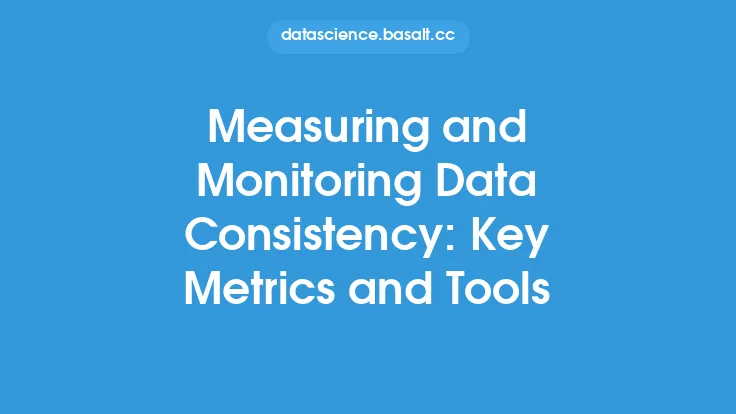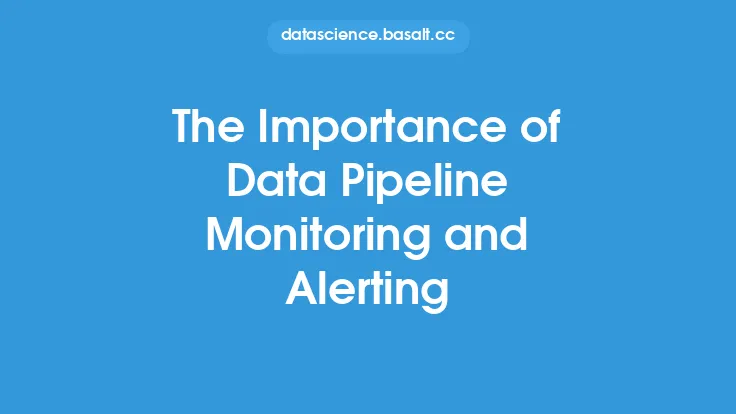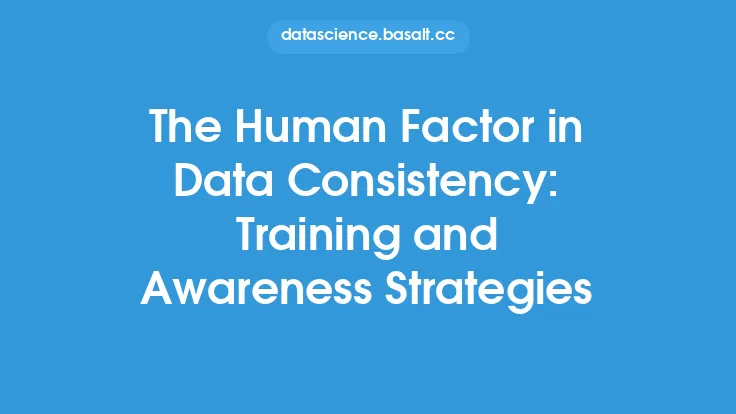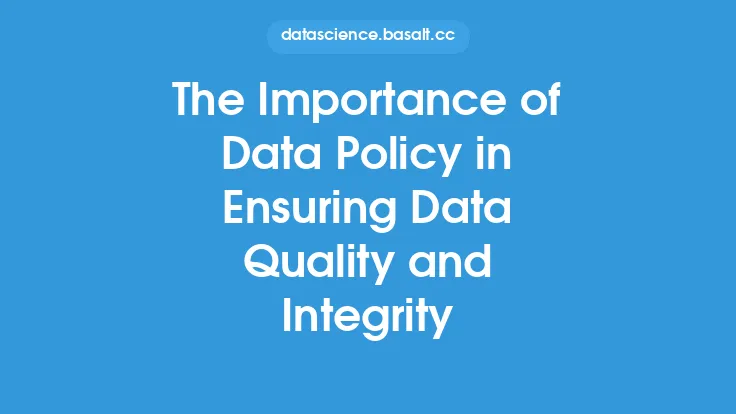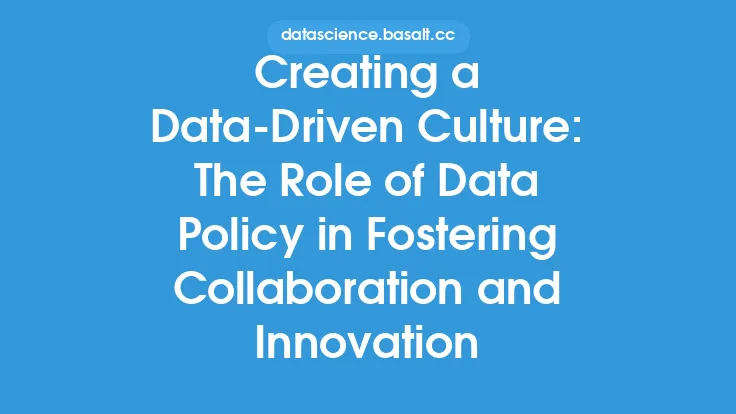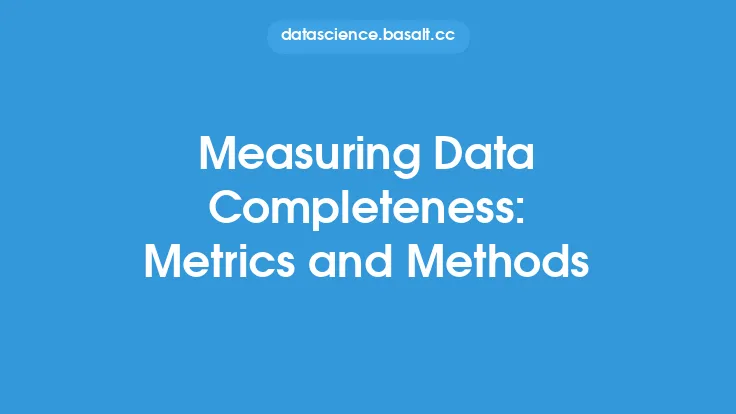Measuring the effectiveness of data policy is a crucial aspect of data governance, as it enables organizations to assess the impact of their data policies on the overall data management landscape. Effective data policy metrics, monitoring, and evaluation strategies are essential to ensure that data policies are aligned with organizational goals and objectives, and that they are being implemented and enforced correctly. In this article, we will delve into the world of data policy metrics, monitoring, and evaluation strategies, and explore the various techniques and tools that organizations can use to measure the effectiveness of their data policies.
Introduction to Data Policy Metrics
Data policy metrics are quantifiable measures that are used to assess the effectiveness of data policies. These metrics can be categorized into several types, including data quality metrics, data security metrics, data compliance metrics, and data utilization metrics. Data quality metrics, for example, measure the accuracy, completeness, and consistency of data, while data security metrics measure the effectiveness of data protection measures, such as access controls and encryption. Data compliance metrics, on the other hand, measure the organization's adherence to regulatory requirements and industry standards, while data utilization metrics measure the extent to which data is being used to inform business decisions.
Monitoring Data Policy Effectiveness
Monitoring data policy effectiveness involves tracking and analyzing data policy metrics over time. This can be done using a variety of tools and techniques, including data analytics platforms, data visualization tools, and data governance software. Data analytics platforms, for example, can be used to analyze large datasets and identify trends and patterns that may indicate issues with data policy effectiveness. Data visualization tools, on the other hand, can be used to create dashboards and reports that provide a clear and concise overview of data policy metrics. Data governance software, meanwhile, can be used to automate data policy monitoring and enforcement, and to provide a centralized platform for managing data policy metrics.
Evaluation Strategies for Data Policy Effectiveness
Evaluating the effectiveness of data policy involves assessing the impact of data policies on the organization as a whole. This can be done using a variety of evaluation strategies, including cost-benefit analysis, return on investment (ROI) analysis, and benchmarking. Cost-benefit analysis, for example, involves comparing the costs of implementing and enforcing data policies with the benefits of improved data quality, security, and compliance. ROI analysis, on the other hand, involves measuring the financial return on investment in data policy initiatives, such as data governance software and data analytics platforms. Benchmarking, meanwhile, involves comparing the organization's data policy metrics with those of other organizations in the same industry or sector.
Technical Considerations for Data Policy Metrics and Monitoring
From a technical perspective, measuring the effectiveness of data policy requires a range of skills and expertise, including data analytics, data governance, and IT. Data analytics skills, for example, are necessary to design and implement data policy metrics, and to analyze and interpret the results. Data governance skills, on the other hand, are necessary to develop and implement data policies, and to ensure that they are being enforced correctly. IT skills, meanwhile, are necessary to implement and maintain data governance software, and to ensure that data policy metrics are being collected and analyzed correctly. In addition, technical considerations such as data architecture, data storage, and data security must also be taken into account when designing and implementing data policy metrics and monitoring systems.
Best Practices for Data Policy Metrics and Monitoring
Best practices for data policy metrics and monitoring include establishing clear and concise data policy metrics, implementing automated data policy monitoring and enforcement, and providing regular reporting and feedback to stakeholders. Establishing clear and concise data policy metrics, for example, involves defining a set of metrics that are aligned with organizational goals and objectives, and that are easy to understand and interpret. Implementing automated data policy monitoring and enforcement, on the other hand, involves using data governance software and other tools to automate the monitoring and enforcement of data policies. Providing regular reporting and feedback to stakeholders, meanwhile, involves creating dashboards and reports that provide a clear and concise overview of data policy metrics, and that are distributed to stakeholders on a regular basis.
Common Challenges and Limitations
Common challenges and limitations of measuring the effectiveness of data policy include the lack of standardization in data policy metrics, the complexity of data policy monitoring and enforcement, and the need for ongoing training and education. The lack of standardization in data policy metrics, for example, can make it difficult to compare data policy metrics across different organizations and industries. The complexity of data policy monitoring and enforcement, on the other hand, can make it difficult to implement and maintain effective data policy metrics and monitoring systems. The need for ongoing training and education, meanwhile, can make it difficult to ensure that stakeholders have the skills and expertise necessary to design and implement effective data policy metrics and monitoring systems.
Future Directions and Emerging Trends
Future directions and emerging trends in measuring the effectiveness of data policy include the use of artificial intelligence (AI) and machine learning (ML) to automate data policy monitoring and enforcement, the development of new data policy metrics and frameworks, and the increasing importance of data policy in ensuring data quality and integrity. The use of AI and ML, for example, can help to automate the monitoring and enforcement of data policies, and to identify potential issues and risks. The development of new data policy metrics and frameworks, on the other hand, can help to provide a more comprehensive and nuanced understanding of data policy effectiveness. The increasing importance of data policy in ensuring data quality and integrity, meanwhile, can help to ensure that data policies are aligned with organizational goals and objectives, and that they are being implemented and enforced correctly.
